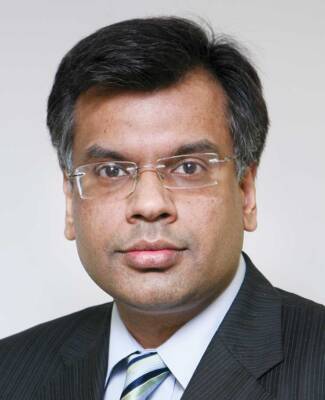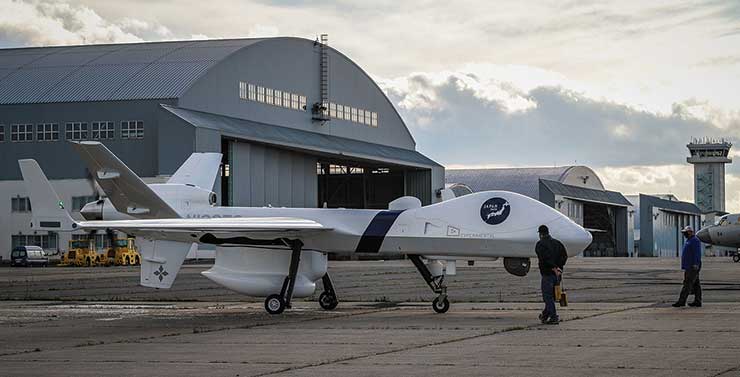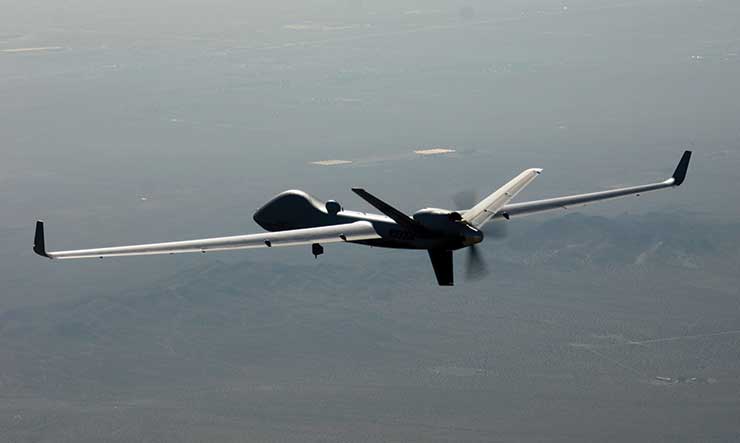 Vivek Lall is Chief Executive of General Atomics Global Corporation at its headquarters in San Diego, California. A Leading Indian-American aerospace and defence expert Dr Lall has been instrumental in major bilateral defence deals between India and US worth around US$18 billion. Dr Lall has conducted his doctoral work in collaboration with NASA.
Vivek Lall is Chief Executive of General Atomics Global Corporation at its headquarters in San Diego, California. A Leading Indian-American aerospace and defence expert Dr Lall has been instrumental in major bilateral defence deals between India and US worth around US$18 billion. Dr Lall has conducted his doctoral work in collaboration with NASA.
In an interview to Ajit K Thakur, Editor, Raksha Anirveda, Dr Vivek Lall showered his insights on decade long India-US relations apart from India’s Demand for Indigenization in regard to acquisitions of new weapons and platforms. Excerpts:
India-US defence and strategic relations have been transformative and has evolved vibrantly over last more than one decade. You, being associated with USIBC and close to the US government for long, were instrumental in a few big decisions taken in regard to India-US strategic relations. Now with Joe Biden being US President; what will be the shape and direction of these bilateral relations? Your viewpoint.
US-India relations in the present day are the result of decades of dedicated efforts by both countries to overcome traditional regional mindsets and economic goals. This is validated by the volume of trade and technology transfer existing today between the two largest democracies in the world. It is universally recognized that India and the USA are natural partners and have similar aspirations for betterment of the world order. Indeed, with Joe Biden at the helm of the US Government, we fully expect this trend to continue.
General Atomics diverse portfolio of first-of-kind electromagnetic aircraft launch and recovery systems, multi-mission rail gun weapon systems, satellite systems, and integrated power and energy technologies are helping revolutionize the way military forces address complex challenges and protect against evolving threats. Kindly elaborate?
There is on-going interest in bringing EMALS and AAG capabilities to support India’s next generation aircraft carrier. Our respective governments will continue discussions and any coordination of potential demonstrations to bring these systems to the fleet as India formulates plans for its future carrier fleet.
We have made several significant announcements in the past year that illustrate how our history in developing a variety of disruptive nuclear technologies is providing a path of innovation to address new market opportunities in advanced materials, energy and space. In early 2020, GA’s Nuclear Technologies and Materials (NTM) division was integrated into GA-EMS, providing us with greater synergies and support to focus on growing Earth and space energy system opportunities, including in-space propulsion and power systems.
In fact, GA-EMS recently delivered a concept for a NASA-funded study for a Nuclear Thermal Propulsion reactor to power future astronaut missions to Mars. GA-EMS also announced it is collaborating with Framatome Inc. in France to develop a new helium-cooled 50-Megawatt electric (MWe) Fast Modular Reactor (FMR) concept that will produce safe, carbon-free electricity and can be factory built and assembled on-site to reduce costs and enable incremental capacity additions. The GA-EMS-led team will be able to demonstrate the FMR design as early as 2030.
In view of dynamically changing geo-political global order and especially the aggressive stance by China at LAC, India’s arms and weapons systems purchase pattern has changed towards multiple source be it France, Russia, Israel and the various unmanned and naval systems from the United States. Recently, US approved India’s request for purchase of worth $90 million military equipment and services of cartridges, Radar systems, Night vision devices. Do you think the new trend in India’s defence purchase will assist in further strengthening of India-US defence cooperation? Throw some light on it with the status of progress on various projects?
India’s defence purchases have been sourced from multiple countries for over decades now. The system of global sourcing, followed by rigorous field evaluation, makes India one of the toughest defence markets to break into today. This is exacerbated by the need for absolute transparency in all stages of the acquisition. With regard to new acquisitions, we are also witnessing a steady demand for ‘Indigenization’, under the ‘Make in India’ category.
With the above trends, defence projects now must incorporate market opportunities for the Indian defence and aerospace industry, which is natural, as newly inducted equipment will require a substantial in-country ecosystem to be useful for the Indian military over its service life. As you will be aware, the recent inductions of ships, submarines, transport aircraft and equipment have large components being sourced by the Indian defence industry, public or private sector. This is very encouraging for foreign OEMs as it helps to not only reduce sustenance costs, but also opens up new markets for regional sourcing and supply.

What is your assessment of global impact of COVID-19 in general and on India in particular regarding defence and aerospace business?
Like a lot of companies, GA has had to adapt the way we work to continue production and maintain the activity of our design offices and deployment sites in support of our customers. Except for production, flight operations and customer-site deployment activities, we use remote work very widely and effectively. Individual social distancing and protective measures, like those applied throughout the world, have helped to limit the impact of COVID in production, logistics, and operations activities. We believe that our measures have not only kept our workforce protected from COVID, but have avoided any significant delays to our product development and customer support.
Taking note of the recent induction of two SeaGuardian drones on lease by Indian Navy, kindly provide insights into General Atomics’ India-specific plans. Is GA looking for collaborative approach to make headway in Indian market in terms of providing technological solutions that too with the emergence of AI, neuroscience, block chain, etc.?
GA, being a technology-centric organization, is excited with the huge opportunity that India presents, whether it’s unmanned aerial vehicles, electro-magnetic systems, or nuclear energy. India’s technological growth since the early 2000s has been a source of inspiration for many. As the strength of India’s Navy continues to grow, solutions such as surface and subsurface surveillance, search and rescue, anti-submarine warfare, and maritime law enforcement become increasingly relevant to secure priorities. GA certainly hopes to bring its expertise to Indian shores very soon in a concentrated form. We have been working with various Indian agencies on these aspects, and the future looks promising.

The scale and scope of Aero India is expanding year after year. What are your plans to make an impactful presence at the biennial airshow? Kindly elaborate with planned product and services that will be on display and to be showcased?
Aero India is a great opportunity for General Atomics to showcase its extensive Unmanned Aerial Systems (UAS) lineage and the Electromagnetic Systems (EMS) Group, which includes products such as the Electromagnetic Aircraft Launch System (EMALS) and Advanced Aircraft Arresting Gear (AAG). GA looks forward to the varied opportunities provided by our interactions with the Government of India and industry partners during Aero India.








